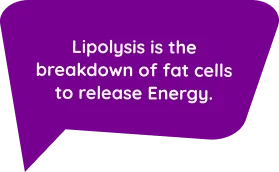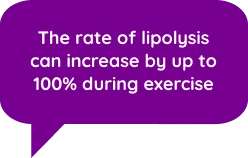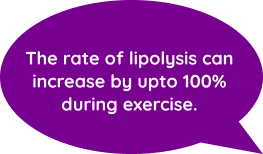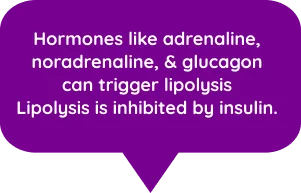
Lipolysis is the process by which the body breaks down fat cells to release free fatty acids and glycerol. It is a vital process for maintaining energy levels and regulating blood sugar. It is also important for weight loss.
When you eat less food than your body needs, it breaks down fat cells to release energy. This process is called lipolysis. The free fatty acids that are released from fat cells are transported to the mitochondria, where they are broken down for energy.
Lipolysis is a very efficient process, and it can produce a lot of energy from a small amount of fat. It is also a major source of energy during exercise.
So, if you are able to use the stored or accumulated fat in your body, it will not only reduce the fat but also give more energy to your body.
If We Go in Little More Details Then Lipolysis Process can be divided in 2 Stages:

Hormonal stimulation: Hormones such as adrenaline, noradrenaline, and glucagon trigger the release of enzymes called lipases. These enzymes break down the fat cells, releasing free fatty acids and glycerol.
Adrenaline: Adrenaline is released in response to stress, exercise, and low blood sugar levels. It triggers the release of lipases from fat cells.
Noradrenaline: Noradrenaline is also released in response to stress and exercise. It has a similar effect to adrenaline.
Glucagon: Glucagon is a hormone that is released by the pancreas when blood sugar levels are low. It triggers the breakdown of glycogen in the liver to release glucose into the bloodstream. However, if blood sugar levels are still low, glucagon can also trigger lipolysis to release free fatty acids into the bloodstream.
Beta-oxidation: The free fatty acids that are released from fat cells are transported to the mitochondria, where they are broken down for energy. This process is called beta-oxidation. Beta-oxidation is a complex process that involves a series of chemical reactions.
The first step in beta-oxidation is the addition of a hydrogen atom to the free fatty acid. This is catalysed by an enzyme called fatty acid CoA ligase. The resulting compound is called fatty acyl-CoA.
The fatty acyl-CoA is then broken down into two-carbon fragments by a series of enzymes. These enzymes are called β-oxidation enzymes.
The two-carbon fragments are then further broken down to produce acetyl-CoA. Acetyl-CoA can then be used for energy or converted to glucose.


Benefits of Enhanced Lipolysis:
When the body uses stored or accumulated fat for energy, it not only reduces the fat but also gives more energy to the body. Here are some of the benefits of enhanced lipolysis:
- It helps to maintain energy levels.
- It helps to regulate blood sugar levels.
- It can help with weight loss.
- It can help to improve athletic performance.
- It can help to reduce the risk of chronic diseases such as heart disease and diabetes.
Factors Good for Lipolysis:
Eating a healthy diet that is low in fat and high in fiber.
- Exercising regularly.
- Getting enough sleep.
- Managing stress.
- Increase Muscle Mass
- Taking certain supplements, such as Cartinine and coenzyme Q10.

Lipolysis is a vital process for maintaining energy levels and regulating blood sugar. It is also very much important for weight loss and healthy Body.
By understanding the lipolysis process, you can make informed choices about your diet and lifestyle to promote healthy weight management.


 Cart is empty
Cart is empty